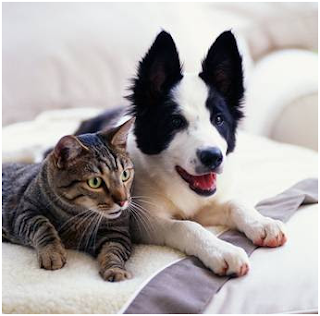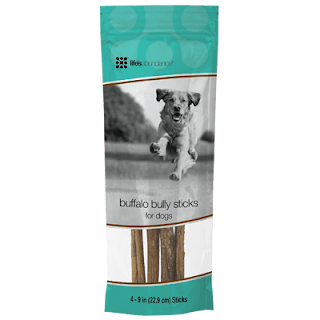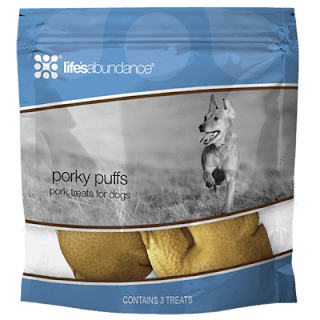What Pet Parents Need to Know About Vaccines by Life's Abundance
Blog post 3/5/19
“Vaccines are good!” “No, they’re bad!” “Do a half dose of the vaccine!” “Titer instead!”
There sure is a lot of noise surrounding vaccines for our pets, isn’t there? I don’t blame you if you think it’s confusing. Heck, I think it’s confusing and I’ve been doing it for almost 20 years. How, when, and what vaccines to use in pets is one of the most common questions I get both in person and online.
When it comes to the truth about vaccines, here’s the real life, not-so-neat reality: there is no one size fits all answer. But the more we understand the principles behind the recommendations, the better equipped we are to make good decisions on behalf of our loved ones.
The immune system is complex, as is the science behind how we optimize it using various vaccinations. Here’s the basic information every pet person needs to understand.
How the Body Fights Disease
As we all know, a well-functioning body fights disease using white blood cells. However, not all white blood cells are the same! They come in three general categories:
1. Macrophages: These cells are the first line of defense. They engulf infected and dying cells, and save pieces of it to present to the other immune cells. Think of them as first responders. They save little pieces of the invader, known as antigens, as evidence from the crime scene!
2. B cells: These cells produce antibodies in response to the antigen. An antibody is a substance that helps the body fight disease in a variety of ways. For example, it can neutralize the invader, or act like a homing beacon for other types of cells to identify the invaders quickly. B cells are like Dr. Nefario from "Despicable Me" ... they don’t take part in the fight directly, but they produce all the gadgets that help the good guy win the battle.
3. T cells: These cells directly attack infected cells. They’re trained to identify a specific antigen, so it can react quickly to destroy the invader. T cells are the trained assassins of the body, honed in on their target.
After an infection is overcome, the body retains some T and B cells specific to that antigen, just in case it encounters it again. In order for those B cells and T cells to react quickly, they must have already been exposed to antigens from the infecting agent. That’s where vaccines come in.
How Vaccines Help
Vaccines imitate infection without causing the actual disease. This allows the body the benefit of those B and T cells carrying around a blueprint for how to respond to the disease, without actually having to survive the infection first. Here’s the important thing to note ... not all vaccines work the same way. Here are the most common types of vaccines we use in veterinary medicine:
1. Attenuated vaccines: These are live infective agents that have been weakened or altered in some way so they do not cause the actual disease. Distemper, parvo, and adenovirus-2 are this type.
2. Inactivated vaccines: These are whole bacteria or viruses that have been killed so they cannot replicate. The most common vaccines in this category are rabies, Leptospirosis, Lyme, influzena, FeLV, and injectable Bordetella. Because these organisms are dead, they are often combined with a substance to “draw” the immune system’s attention: like sending a flare into the sky. These substances are called adjuvants. Vaccines in this category are, according to some, the most likely to cause an adverse reaction.
3. Toxoid vaccines: These are a detoxified toxin - these are not actually in response to an infectious agent at all! Rattlesnake vaccine is the most common example.
4. Recombinant vaccines: These vaccines represent a new generation of vaccine technology. They take a piece of DNA or RNA from the infectious agent and insert it into a benign live virus that will not cause infection. Because the organism is live, it triggers a nice strong immune response without the need for adjuvant. If your cat has been vaccinated with adjuvant-free Purevax, then you’re familiar with this type of vaccine.
How often do we need to re-vaccinate?
Well, here’s where it gets tricky. Some vaccines last longer than others because of the nature of the infection itself. Or, the exact same vaccine may last longer in one individual than in another. I have a colleague who needs a rabies vaccine every three years; mine lasted 20! There is no guaranteed answer.
So, what do we do? We make recommendations based on minimizing the number of vaccines while maximizing the level of protection for animals taking into account the wide variability in response. The American Animal Hospital Association assembled a gold star panel of the world experts in immunology who make, in my opinion, the most informed recommendations for dogs. The American Association of Feline Practitioners has done the same for cats. These are guidelines that are tailored to your pet with help from your veterinarian.
When you talk to your vet about what your pet needs, you balance risk versus benefit for the individual. You look at lifestyle, likelihood of exposure to diseases, severity of those diseases, current health, and vaccine history. The two most important factors are risk and health history.
Risk: Not all pets are at equal risk for disease. A pug who lives in a skyscraper in San Francisco is not at the same risk for certain diseases as a hunting dog in Louisiana.
Health History: A healthy one year old who is just finishing up their initial vaccine series has different needs than a sixteen-year-old diabetic who has been vaccinated on time her whole life. A sick pet, one with a history of reactions to vaccines, or one with a history of immune mediated disease will have different recommendations.
The exception is rabies, a disease that kills both pets and people. Most jurisdictions have mandated rabies vaccination guidelines written into law.
Can’t I just titer?
Titers are, for those willing to pay for them, a decent (but not foolproof) way of feeling out a pet’s immune status. Titers check for circulating antibodies to a specific disease. Remember when we were talking about B cells and T cells? Titers only tell you about long term B cell response. A pet with a high antibody titer may still be bottomed out on T cells, and vice versa. It’s only part of the picture. It’s not a guarantee that a pet is protected, but it gives you more information to make an informed decision particularly when it comes to how often to boost vaccines in an adult animal who already has several boosters.
What about half doses for smaller pets?
It’s tempting to think of vaccines the same way that we do drugs, whose efficacy is dependent on the concentration in the blood. Not so with vaccines. Vaccines work more on an all-or-nothing proposition: either they get the body’s attention, or they don’t. The degree of the response is determined by the body’s production of those T and B cells. This is the same as in human medicine: my kiddos get the same volume of flu vaccine as my husband. It’s not worth the risk to gamble with a vaccine not working, with no proven benefit.
It’s challenging to dilute a textbook’s worth of information into a single blog post, but hopefully this gives you a little background for your discussions with your vet. Vaccines, nutrition, weight control, exercise ... lots of moving parts come together to help ensure the best health outcomes for your pets. The best decisions are those you make with your trusted health care providers as a team!
Dr V
Dr. Jessica Vogelsang, DVM
References:
“Understanding How Vaccines Work” from CDC.gov
AAHA canine vaccination guidelines
AAFP feline vaccination guidelines




















